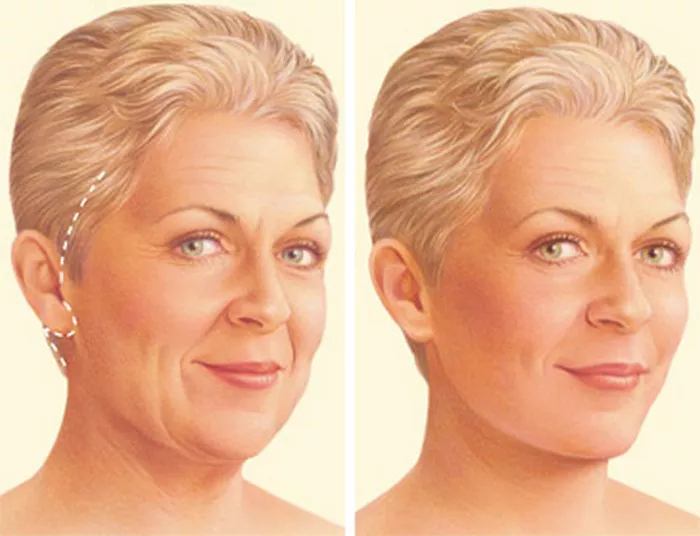Facelift surgery has long been a popular option for individuals seeking to rejuvenate their facial appearance and address signs of aging. However, advancements in cosmetic procedures have introduced non-surgical alternatives that offer effective and less invasive solutions. In this article, we will explore the best non-surgical facelift options available today, their benefits, and what you can expect from each procedure.
Understanding Non-Surgical Facelift
A non-surgical facelift refers to a range of cosmetic procedures that aim to rejuvenate the face without the need for surgery. These procedures utilize various techniques and technologies to address specific concerns, such as wrinkles, sagging skin, loss of volume, and overall facial laxity. While non-surgical facelifts cannot provide the same level of results as a surgical facelift, they offer a viable alternative for those who are not ready or suitable for surgery.
Different Types of Non-Surgical Facelift
-
Dermal Fillers
Dermal fillers are injectable substances that can restore lost volume, smooth out wrinkles and fine lines, and enhance facial contours. Hyaluronic acid fillers, such as Juvederm and Restylane, are commonly used to add volume and plump up the skin. The procedure is minimally invasive, and results can last from several months to over a year, depending on the specific filler used.
-
Botox and Dysport
Botulinum toxin injections, commonly known as Botox or Dysport, are used to relax the muscles responsible for dynamic wrinkles, such as crow’s feet and forehead lines. By temporarily paralyzing these muscles, the appearance of wrinkles is reduced. The procedure is quick, virtually painless, and results typically last for three to six months.
-
Thread Lift
A thread lift is a non-surgical procedure that uses dissolvable sutures to lift and tighten sagging skin. The threads are inserted beneath the skin, and then gently pulled to lift the targeted areas. This stimulates collagen production and provides a lifting effect. Thread lifts are particularly effective for improving the appearance of the midface, jowls, and neck. Results can last from one to two years, depending on the type of threads used.
-
Ultherapy
Ultherapy is a non-invasive procedure that utilizes ultrasound energy to stimulate collagen production and lift sagging skin. It targets the deep layers of the skin and underlying tissues, resulting in a gradual tightening and lifting effect. Ultherapy is commonly used to treat the brows, jawline, and neck. Results can appear gradually over several months and can last up to a year or more.
-
Laser Resurfacing
Laser resurfacing uses targeted laser energy to improve the texture, tone, and tightness of the skin. It stimulates collagen production, reduces wrinkles, and can address pigmentation irregularities. Different types of lasers are used depending on the desired outcomes and the specific concerns being treated. Results can vary, but multiple sessions may be needed to achieve optimal results.
Benefits of Non-Surgical Facelift
Non-surgical facelift procedures offer several benefits for individuals seeking facial rejuvenation:
-
Minimally Invasive
Non-surgical facelift procedures are minimally invasive compared to surgical facelifts, which require incisions and a longer recovery period. Non-surgical options typically involve minimal downtime, allowing individuals to resume their normal activities quickly.
-
Lower Risk and Complications
Non-surgical procedures carry fewer risks and potential complications compared to surgical interventions. While there may still be some risks involved, they are generally considered safer and have a lower risk of scarring, infection, or anesthesia-related complications.
-
Natural-Looking Results
When performed by skilled practitioners, non-surgical facelift procedures can yield natural-looking results. The goal is to enhance the individual’s natural features rather than drastically altering their appearance.
-
Quick and Convenient
Many non-surgical facelift procedures can be performed in a relatively short amount of time, often in an office setting. This makes them convenient for individuals with busy schedules or those seeking immediate results for a special event.
-
Gradual Improvement
Non-surgical facelift procedures often provide gradual improvement, allowing for a more subtle transformation over time. This can be particularly appealing to individuals who prefer a more gradual change or who want to maintain confidentiality about their cosmetic enhancements.
Considerations and Consultation
While non-surgical facelift procedures offer many benefits, it is important to consider certain factors before undergoing any treatment:
-
Realistic Expectations
It is essential to have realistic expectations about the outcomes of non-surgical facelift procedures. While they can provide significant improvements, they cannot replicate the same level of results as a surgical facelift. It is important to discuss your goals and expectations with your provider to determine if a non-surgical approach is appropriate for you.
-
Maintenance and Follow-Up
Non-surgical facelift procedures are not permanent solutions, and the results are temporary. To maintain the desired outcome, follow-up treatments or touch-ups may be necessary. It is important to discuss the expected longevity of the results and any recommended maintenance treatments with your provider.
-
Choosing a Qualified Practitioner
To ensure the best possible results and minimize risks, it is crucial to choose a qualified and experienced practitioner. Look for board-certified plastic surgeons, dermatologists, or aesthetic specialists who have extensive experience in performing non-surgical facelift procedures.
Conclusion
Non-surgical facelift procedures offer a range of options for individuals seeking facial rejuvenation without undergoing surgery. These procedures can address specific concerns such as wrinkles, sagging skin, and volume loss, providing a more youthful and refreshed appearance. While the results are not as dramatic as those achieved with surgical facelifts, non-surgical options offer a safer, less invasive alternative with minimal downtime. It is important to consult with a qualified practitioner to discuss your goals, assess your suitability for specific procedures, and determine the best non-surgical facelift approach for your individual needs.

